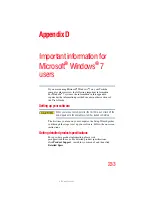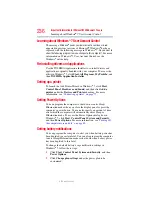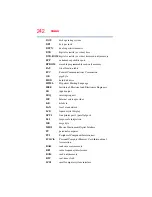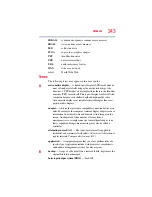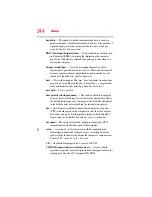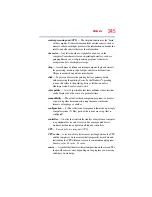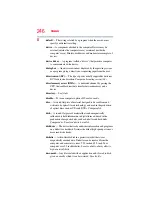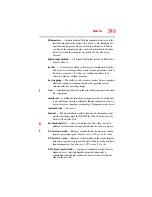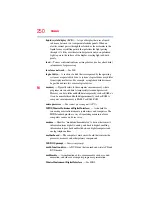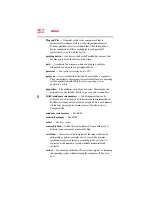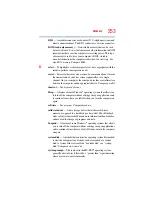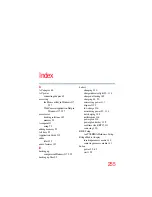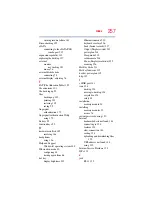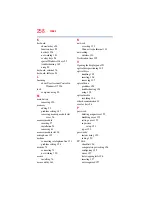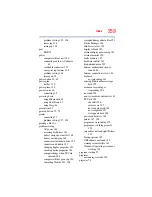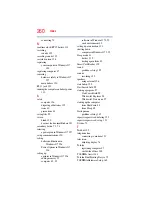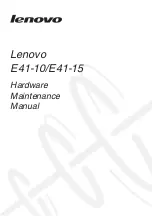
Glossary
245
central processing unit (CPU)
— The chip that functions as the “brain”
of the computer. It takes information from outside sources, such as
memory or keyboard input, processes the information, and sends the
results to another device that uses the information.
character
— Any letter, number, or symbol you can use on the
computer. Some characters are non-printing characters, such as a
paragraph break in a word-processing program. A character
occupies one byte of computer storage.
chip
— A small piece of silicon containing computer logic and circuits
for processing, memory, input/output, and/or control functions.
Chips are mounted on printed circuit boards.
click
— To press and release the pointing device’s primary button
without moving the pointing device. In the Windows
®
operating
system, this refers to the pointing device’s left button, unless
otherwise stated. See also
double-click
.
color palette
— A set of specified colors that establishes the colors that
can be displayed on the screen at a particular time.
compatibility
— The extent to which computers, programs, or devices
can work together harmoniously, using the same commands,
formats, or language as another.
configuration
— (1) The collection of components that make up a single
computer system. (2) How parts of the system are set up (that is,
configured).
controller
— A device that controls the transfer of data from a computer
to a peripheral device and vice versa. For example, disk drives,
monitors, keyboards, and printers all require controllers.
CPU
— See
central processing unit (CPU).
CPU cache
— A section of very fast memory residing between the CPU
and the computer’s main memory that temporarily stores data and
instructions the CPU will need to execute commands and programs.
See also
cache, L1 cache, L2 cache.
cursor
— A symbol that indicates the current position on the screen. The
shape of the cursor varies, depending on the program you are using
and what you are doing.



